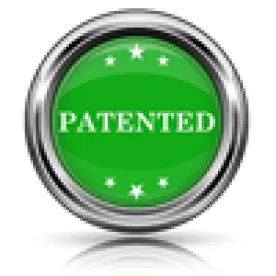Takeaway: The mere existence of an indemnification agreement does not establish that the indemnitor has the opportunity to control an inter partes review or need to be identified as a real party-in-interest.
In its Decision granting institution of inter partes review, the Board determined that Petitioner established a reasonable likelihood that it would prevail with respect to at least one of claims 1-2 and 4-17 of the ’701 patent. The Board determined that an indemnification agreement was insufficient to establish that the indemnitor controlled the present proceeding and should have been named as a real party-in-interest.
A petition may be considered only if it identifies all real parties-in-interest (“RPI”). The Board entered an Order on Motion to Amend the Mandatory Notice authorizing Mercedes-Benz USA, LLC (“Mercedes”) to submit an amended mandatory notice to identify Daimler North America Corporation and Daimler AG (collectively, “Daimler”) as additional RPI. Mercedes filed an amended mandatory notice identifying Daimler. Patent Owner argued that the Petition should be dismissed because it still failed to identify all RPI, namely Verizon Telematics, Inc. (“Verizon”).
The determination of whether a party is an RPI is a highly fact dependent question in which the focus is on the party’s relationship to the inter partes review pending before the Board and the degree of control the party can exert over the proceeding. Patent Owner alleged that Mercedes and Verizon have an agreement for Verizon to provide telematics services to purchasers of vehicles sold by Mercedes and that the agreement further stipulates (1) sharing of expenses and generated revenue and (2) indemnification for, inter alia, intellectual property matters. Patent Owner argued that Mercedes is acting as an agent or proxy of Verizon. Petitioner argued that Verizon does not have control of the instant proceeding or the corresponding district court case. The Board concluded that the mere existence of an indemnification agreement does not establish that the indemnitor has the opportunity to control an inter partes review. Here, Mercedes has not invoked indemnification and Patent Owner has not established that Verizon has the ability to control the proceeding to the degree that would be expected from a formal copetitioner.
The ’701 patent relates to a system that includes a receiver to detect the transmission of signals and, responsive to the reception, check for a code that identifies a particular vehicle of interest. Petitioner challenged claims 1-2, 4-5, 1-14, and 16 as obvious and anticipated by Porter and/or Dulaney; claims 5-9 and 15 as obvious over Porter and Brei; claim 17 as obvious over Porter and Sadamori; claims 1-2, 4-5, 10-14, and 16 as anticipated and/or obvious over Winkler and/or Dulaney; claims 5-9 and 15 as obvious over Winkler and Brei; and claim 17 as obvious over Winkler and Sadamori.
The Board construed several terms. The Board, unpersuaded by either party’s construction, adopted the broadest reasonable interpretation of “a lock-out for preventing said generation of indication of identity with said at least one user-selected code” according to its plain and ordinary meaning. A “means within said receiver for comparing said code to a plurality of stored values” was construed as “comparing said code to a plurality of stored values responsive to a match therewith triggering an alarm or an alert.” The Board determined that “means to prevent at least one of said plurality of stored values from being included in said match signal generating” has the recited function and the structure is the microprocessor. A “means for detecting the elapse of a time interval, and responsive thereto, disabling said preventing means” and “a means for detecting a transmission collision and re-transmitting said common transmission signal responsive thereto” were likewise construed.
Turning to an analysis of the art and challenged claims, the Board stated that Porter, to anticipate claim 1, must disclose actively preventing the generation of an indication of identity before it occurs. The Board concluded that Porter discloses passively deactivating, after the initial generating an indication of identity has occurred. Thus, claims 1, 2, 4-5, 10-14, and 16 were not anticipated by Porter. However, the Board concluded that Dulaney discloses actively preventing an alert. Thus, the Board concluded that Petitioner has demonstrated a reasonable likelihood that claims 1-2, 4-5, 10-14, and 16 would have been obvious in view of Porter and Dulaney. The Board reached a similar conclusion for claims 5-9, 15, and 17 based on a combination of two or more of Porter, Dulaney, Brei, and/or Sadamori.
Regarding Petitioner’s challenge based on Winkler, Patent owner argued that Winkler’s disclosure regarding the use of the learn function on receiving unit 120 does not select a code to which the representative code is compared because the user instructs Winkler’s receiver to learn vehicle identification information. The Board, unpersuaded, noted that Patent Owner’s argument is contrary to the specification of the ’701 patent which provides that the user can select a code, such as “531,” for a desired transmit vehicle or the user can select from descriptive text, such as “downtown.” The Board concluded that Petitioner has demonstrated a reasonable likelihood that claims 1-2, 4-5, 10-14, and 16 of the ’701 patent are anticipated by Winkler. The Board concluded that Petitioner’s obviousness challenge of the same claims based on Winkler and Dulaney was likewise demonstrated. The Board also concluded that Petitioner has met its burden with respect to its obviousness challenges of claims 5-9, 15, and 17 based on two or more of Winkler, Brei, and/or Sadamori.
MERCEDES-BENZ USA, LLC, DAIMLER NORTH AMERICA CORPORATION, and DAIMLER AG v. PROXIMITY MONITORING INNOVATIONS LLC, IPR2015-00397
Paper 18: Decision on Institution of Inter Partes Review
Dated: July 17, 2015
Patent: 6,958,701
Before: Michael W. Kim, Trenton A. Ward, and Jason J. Chung
Written by: Ward
Related proceedings: Proximity Monitoring Innovations LLC v. AssetWorks, Inc.,No. 1.14-cv-0575 (D. Del.); Proximity Monitoring Innovations LLC v. Voxx Elecs. Corp., No. 1.14-cv-0577, (D. Del.).



 />i
/>i

